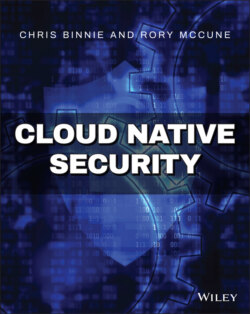Читать книгу Cloud Native Security - Chris Binnie - Страница 26
Running Rootless Podman
ОглавлениеFor a more mature version of Docker Engine being run without the root user, let's look at another container runtime that can achieve that, too.
Some industry commentators were surprised when Red Hat applied extra development efforts to a runtime called Podman, as it appeared to come out of the blue (developers.redhat.com/blog/2018/08/29/intro-to-podman). Red Hat has now gone a step further and reportedly removed official support for the Docker package for Red Hat Enterprise Linux v8.0. It has been said that keeping up with feature and security updates for the Community Edition of Docker was a driver in the decision to go it alone. Indeed, Red Hat has created even a podman-docker RPM package that links Docker to Podman for people who are comfortable using Docker commands (access.redhat.com/documentation/en-us/red_hat_enterprise_linux/8/html-single/building_running_and_managing_containers/index). Maintaining autonomy and avoiding reliance on a third party were also apparently factors; Red Hat customers made it clear that their preference was for the container runtime to be either integral to the operating system or integral with OpenShift.
Another valuable Podman feature is its ability to run daemonless. Consider that for a moment. Rather than running an application all year round on critical systems (which in itself represents a superuser-run attack vector), it is possible to use the container runtime only when it is needed. It is a clever and welcome addition to Podman's offering. For backward compatibility, the venerable Podman happily runs container images compliant with the Open Container Initiative (OCI; see www.opencontainers.org), and it is compatible with Docker images, too.
And, with Red Hat Enterprise Linux v8.0 there has been a clearer focus on helping users move away from Docker in Kubernetes to use CRI-O (cri-o.io), which is now one of the preferred container runtimes in Kubernetes thanks to its lightweight and more secure nature. An interesting Red Hat blog entry can be found at developers.redhat.com/blog/2019/01/29/podman-kubernetes-yaml.
It is safe to say that Podman handles the running of containers differently than Docker. Instead of using containerd (the popular runtime) and containerd-shim (the runtime used for daemonless containers that acts a type of parent that shepherds a container's child processes), it uses a conmon process for every running container. According to Red Hat (as described at developers.redhat.com/blog/2019/01/15/podman-managing-containers-pods/), conmon is a small program written in the C language that monitors the parent process of each container. If the container stops or fails, then it dutifully passes on the exit code. Additionally, conmon is responsible for allowing the tty to be attached to a container, and conmon also provides the daemonless functionality that Podman achieves. It manages this by continuing to run, even when Podman has stopped, which cleverly keeps a detached container alive in the background. There is more information on how that works here: developers.redhat.com/blog/2019/01/15/podman-managing-containers-pods.
